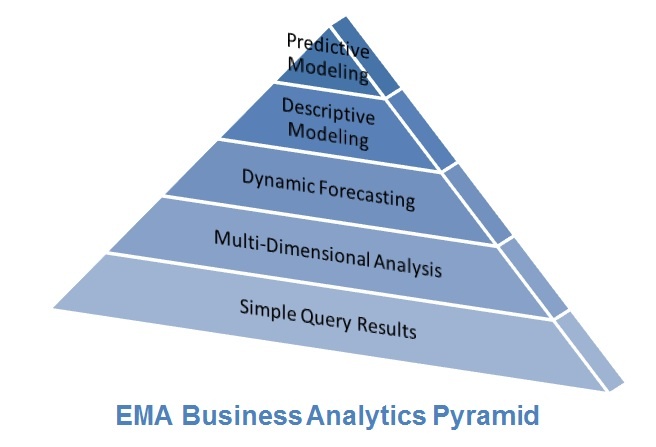Waaay back in the day (say 2002), organizations would ask themselves:
“If our customer and prospect (potential customer) information is our most valuable asset, why would we EVER trust it with a 3rd party who would put it with the customer information from other companies?”
Today, organizations do not hesitate to start their sales endeavors with the swipe of a credit card and the creation of a Salesforce.com account. In fact, the concept of X-as-as-service has grown to have as many definitions as the concept of cloud computing itself. There are infrastructure-as-a-services (IaaS) that allow you to have the next best thing to a bare metal server installation in your very server room. There are platform-as-a-service (PaaS) offerings that allow you to have an operating environment such as Windows, Linux or Hadoop available often faster than the ability of someone to download the software to install those services. There are database-as-a-service or data warehouse-as-a-service options available, which are essentially PaaS solutions, in the cloud. DaaS and DWaaS provide ready-made solutions for those who want to start with a data management environment where you can build operational or analytical environments. There are software-as-a-service (SaaS) implementations such as Salesforce.com that provide the complete package of software operating in the cloud.
In particular, Mid-sized organizations enjoy success with x-a-as-service environments. These organizations represent Small/Medium sized business (0-500 head count) and independently operating departments in larger enterprises. Mid-sized organizations by their size often do not have the plant and equipment to have an appropriate technology infrastructure such as a server room with redundant power, and backup and recovery services. Often times, this comes from the fact that Mid-sized organizations do not have the technical staff to support these environments. Other times, Mid-sized organizations do not have a physical location for a technology environment.
With all of these elements that drive the adoption of cloud-based x-as-a-service offerings, one area that many consider a prime opportunity for value to organizations of all sizes is that of data analytics-as-a-service. This type of cloud-based offering sits between the functionality offered by PaaS environments such as database-as-a-service and SaaS offerings such as the Gmail email service or the Dropbox storage service. Data analytics-as-a-service can be a complex endeavor. Due to the fact that, unlike installing a database or a server environment, data analytics represents a unique set of requirements for each organization based on:
- What data is available from accounting, point of sales, payment systems, CRM and other systems?
- What is the state of maturity of culture in an organization to utilize and manage data analytics?
- What type of data analytics is required for a given situation?
Some organizations require more traditional analytical workloads such as the ability to discover Top-100 customers or Top-10 selling brands. Other organizations are looking to take a step up the analytical “ladder” and discover how their employees are performing by region or job description/code. Still others want to take information from their existing operations and project where they will be in 12-18 months or determine what-if demand scenarios associated with increasing prices or diversifying product lines. The next step, and possibly the most difficult, is to start using advanced analytical models to determine the most important attributes of “model” customers or how to predict the revenue generating potential of products based on past performance. Each of these steps is represented by the levels of the EMA Analytical Pyramid.
Since each of these levels can have particular definitions based on the organizational requirements, data analytics-as-a-service is more along the lines of tailoring or standardizing a sales process or customer relationship management (CRM) framework such as Salesforce.com than in a database or operating system environment. However, just as sales procedures have been “mastered” by Salesforce.com, data analytics is now an area where organizations can start asking the question:
“We need to advance our data analytics practices to create a competitive advantage in our marketplace. It will be the difference between our success and failure… Why would we put it on a server in a server room where it could fail…?”
Several organizations offer this type of data analytics-as-a-service. Several of the established “mega-vendors” provide solutions such as those listed above based on their traditional approaches. There are also smaller organizations that offer new methodologies to the business intelligence concept. A new entrant to the field is Perceivant. Perceivant focuses on assisting organizations with:
- Data acquisition and integration for faster time to value
- Business analytics spanning from simple to advanced analytics
- Information presentation to speed adoption of data analytics
- Big Data analytics utilizing advanced, statistical analysis via a hosted “R” environment
Perceivant does this with a rapid deployment, cloud-based architecture that provides analytical results many times faster than environments such as Hadoop.
What say the readers?
Do you have confidence that your analytical challenges can be met in a cloud-based data analytics-as-a-service environment? Is an operational process such as Salesforce.com a poor analogy to the analytical environments required to perform business intelligence activities? Are your analytical activities too much for cloud? Is data analytics-as-a-service just the thing that you have been looking for?
Provide your comments below and/or ping me via twitter at @JohnLMyers44 with the hashtag #cloudDataAnalytics


